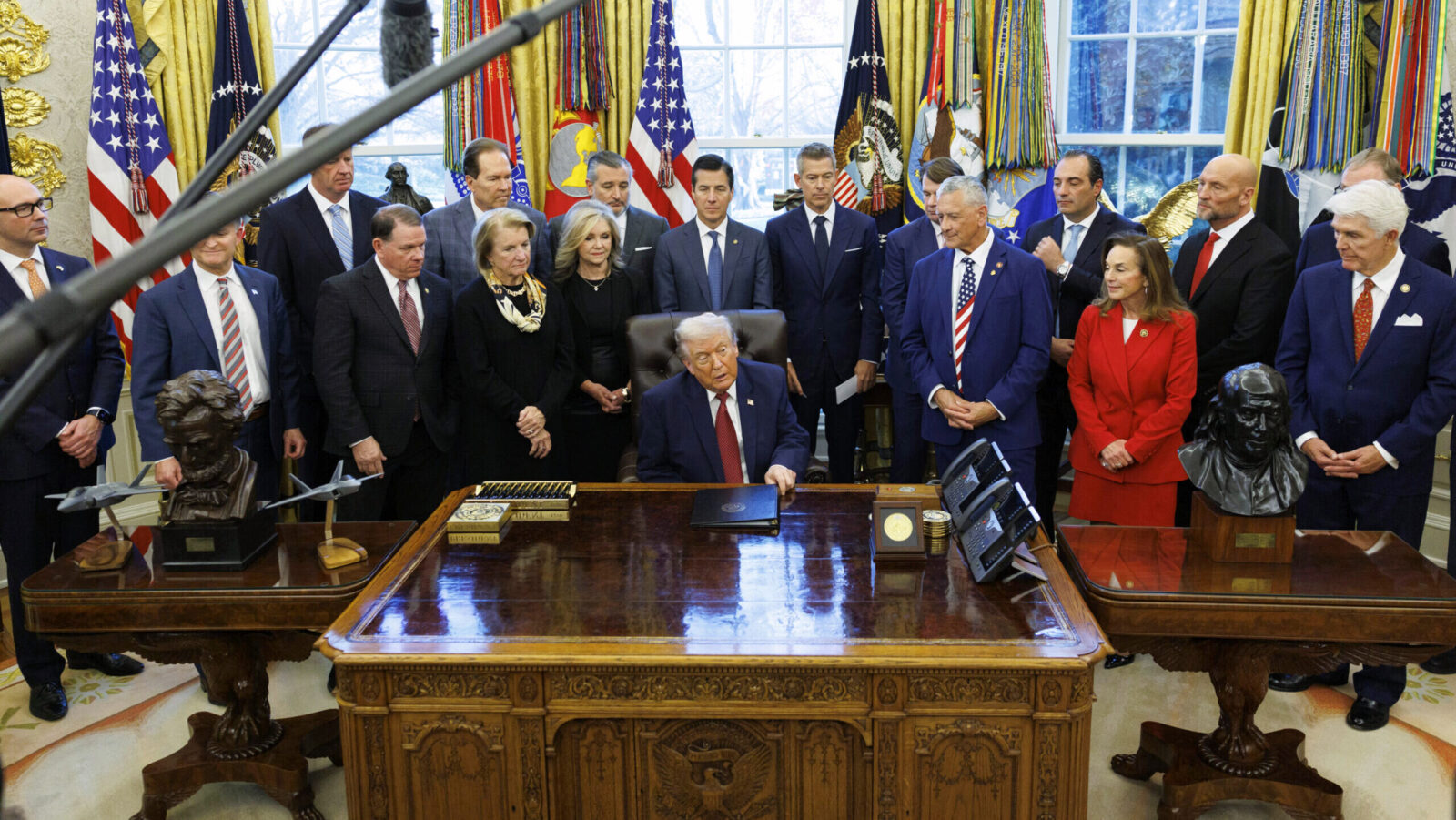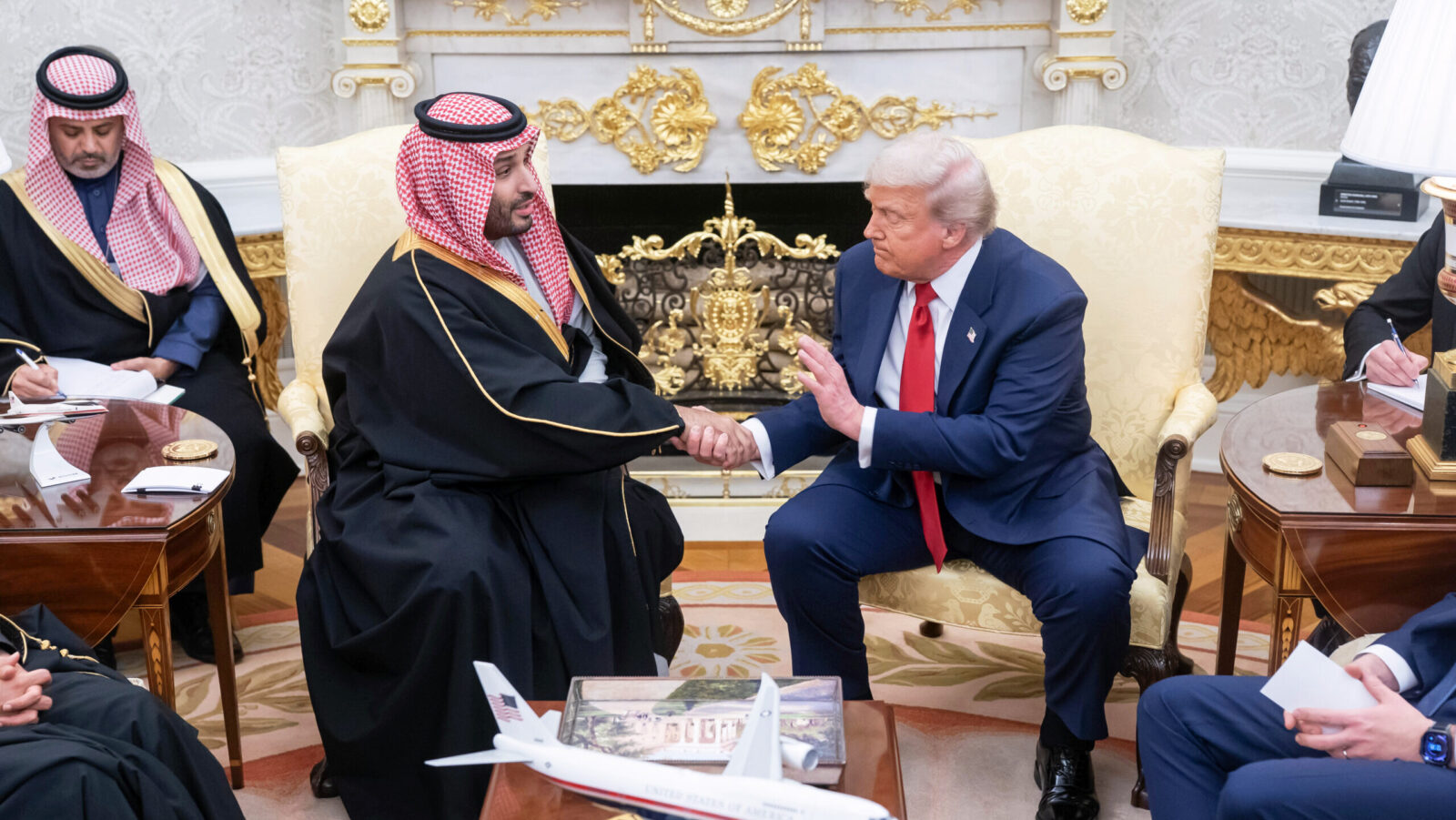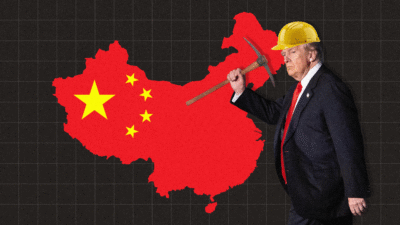Tariffs Deliver Record Drop in US Trade Deficit
Does the deficit crunch mean the US has won the first big battle of the trade war? Well, that’s a complicated question

Sign up for smart news, insights, and analysis on the biggest financial stories of the day.
Call it the gravitational pull of Trump’s tariffs: First came the tidal wave; now, the tide is receding.
After a record-breaking trade deficit in March, as businesses rushed to order goods ahead of a massive spike in import duties, data from the US Commerce Department on Thursday shows that April delivered a record-breaking decrease in the trade deficit. Does that mean the US has won the first big battle of the trade war? Well, it’s complicated.
Trade-Offs
So just how big was the drop? In April, the trade deficit narrowed to just $61.6 billion — way, way, way smaller than the record-setting, Grand Canyon-sized $138.3 billion chasm seen in March. That marks the largest month-over-month deficit contraction on record, according to the Commerce Department, and comes in below consensus expectations of approximately $66 billion. Overall, imports of foreign goods fell about 16% month-over-month to $351 billion, the report said. According to a data analysis by The New York Times combining figures from the Commerce Department and tracking by Moody’s Analytics, the decrease included importing fewer cell phones from China, pharmaceuticals from Switzerland and Ireland, and automotive parts from South Korea, Japan, Mexico, and Canada. Canada reported a record trade deficit of its own on Thursday, of about $5.2 billion (in US currency) in April, as its auto industry gets crushed by tariffs.
Curbing America’s reliance on imports was just Step One of the White House’s economic plan. In April, at least, it looks like Mission Accomplished (Note: Economists don’t tend to think deficits are inherently negative). But Step Two in the plan was reviving America’s manufacturing core, and it remains unclear if tariffs will prove an effective tool to that end:
- Helping shrink the deficit gap was a 3% bump in US exports to $289.4 billion in April, per the Commerce Department — also good for nearly $16 billion more than recorded in April 2024. From March to April, the US swung from a trade deficit to a trade surplus with several countries, including Australia, Switzerland, and Spain.
- That said, US manufacturing isn’t exactly thriving under the new stop-and-start tariff regime. Manufacturing activity contracted for the third consecutive month in May, according to an Institute for Supply Management survey released earlier this week, as tariffs spike the prices and delivery times of inputs; the materials shortage has caused particular headaches in the auto industry, with Ford even temporarily halting production at a Chicago plant last week.
Deals, Deals, Deals: Step Three in the White House’s plan has been to use the threat of major tariffs to renegotiate trade deals with countries the world over. Thursday also provided some updates on that front, with German Chancellor Friedrich Merz visiting the White House as the European Union continues to hash out trade agreements with the US. “He’s a very great representative of Germany,” POTUS Trump said of Merz, adding, “We’ll have a good trade deal.” The White House also agreed to further talks with leaders in Beijing on Thursday, with the president saying “we’re in very good shape with China and the trade deal” after the two sides had gotten “a little off-track.”











